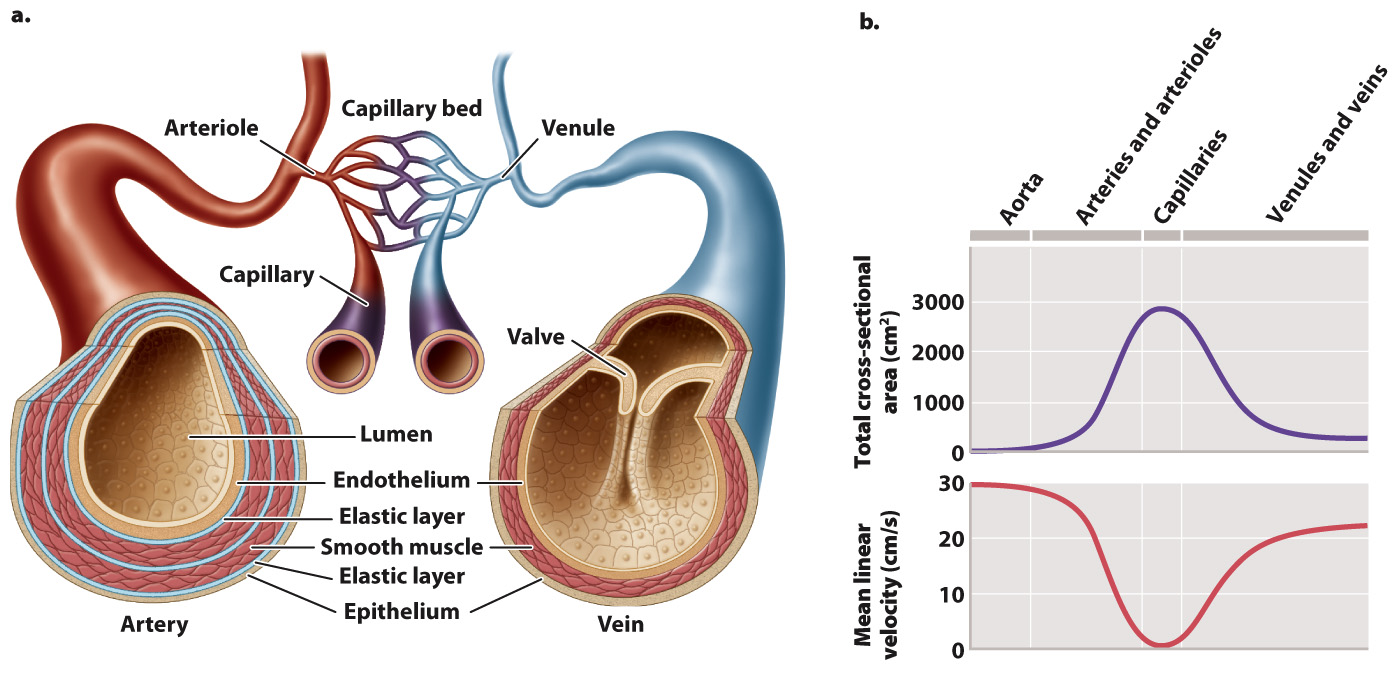Circulatory systems have vessels of different sizes to facilitate bulk flow and diffusion.
For a fluid like blood to flow through a set of pipes, pressure (P) is required to overcome the resistance to flow (R). The pressure developed by a heart when it contracts establishes a rate of blood flow that is governed by P/R. That is, the rate of blood flow increases with an increase in pressure and decreases with an increase in resistance. The resistance to flow is determined in part by the fluid’s viscosity and the vessel’s length. More viscous fluid and longer vessels of a given diameter have greater resistance. However, the main factor governing resistance to flow is the vessel’s radius (r). Resistance is proportional to 1/r4, which means that, if a vessel’s radius is reduced by half, its resistance to flow increases 16 times.
The high resistance of narrow vessels presents a challenge. To keep diffusion distances short, gas exchange between cells and blood requires narrow vessels. How does the circulatory system overcome the dramatic increase in resistance with narrower diameters?
The organization of animal circulatory systems provides an answer (Fig. 39.17). Animal circulatory systems are organized to have blood flow over longer distances in a relatively few large-

It is at the capillaries that gases are exchanged by diffusion with the surrounding tissues. The number of smaller-
This organization has two advantages. First, it maintains the same volume of blood flow at all levels within the circulatory system: The increased resistance to flow in the capillaries is offset by the large increase in the number of capillaries. Second, it enables the blood to flow more slowly in smaller vessels (Fig. 39.17b), providing time for gases and metabolites to diffuse into and out of the neighboring cells.